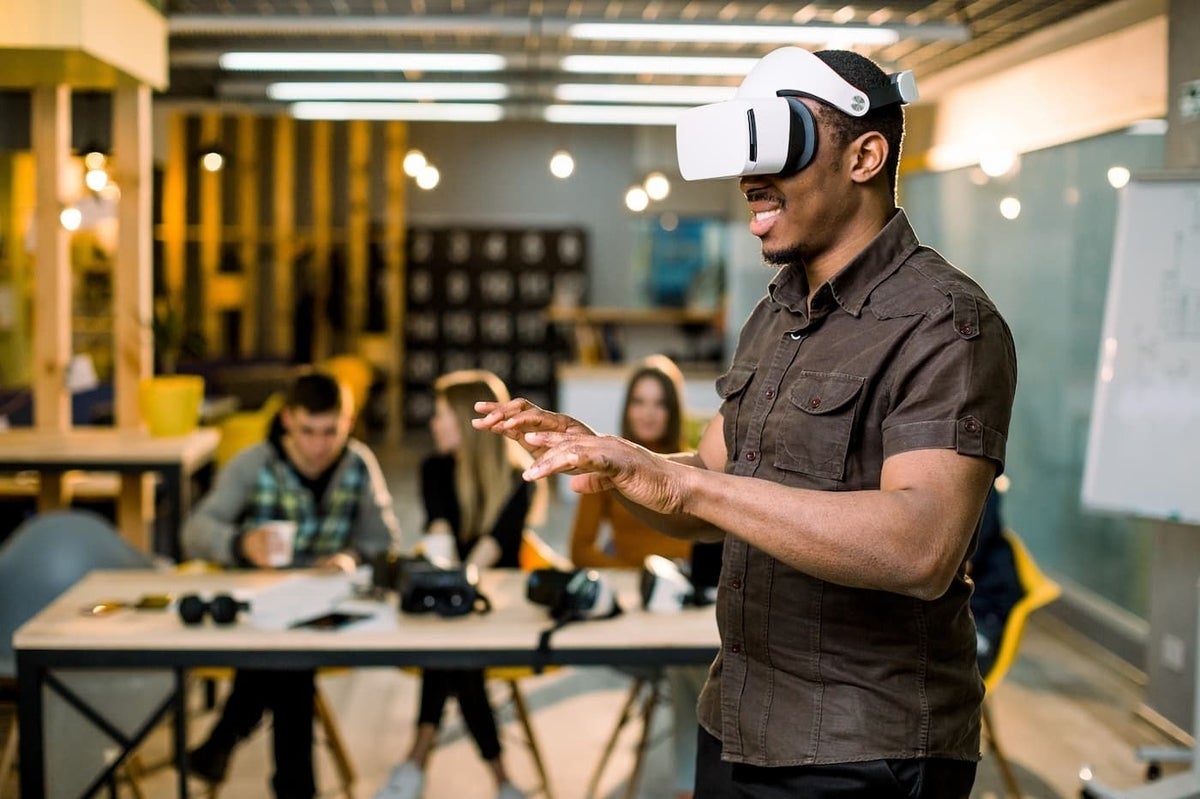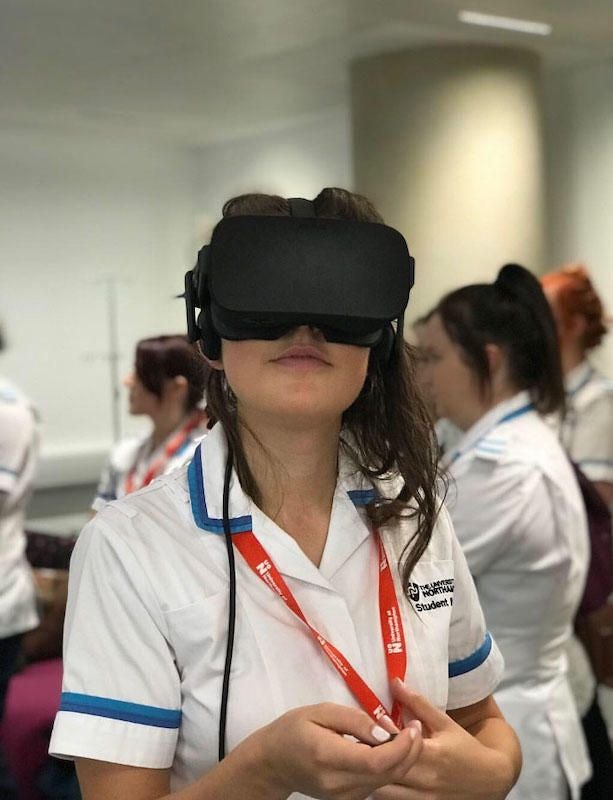
College students at schools from Georgia to Oregon will have a new back-to-school supply this fall: virtual reality headsets. Seven universities and colleges are opening digital twins of their campuses to offer an alternative to class via video call.
SEE: Quick glossary: Metaverse (TechRepublic Premium)
Each school will roll out a digital twin of campus for students to attend either on campus or remotely. Each student will receive a Meta Quest 2 virtual reality headset for use during the course. Courses will be synchronous as if they were attending class on a physical campus.
The universities and colleges include:
- Morehouse College, Atlanta, GA
- University of Kansas School of Nursing, Kansas City, KS
- New Mexico State University, Las Cruces, NM
- South Dakota State University, Brookings, SD
- West Virginia University, Morgantown, WV
- University of Maryland Global Campus, Adelphi, MD
- Southwestern Oregon Community College, Coos Bay, OR
The student populations in the cohort range from 2,200 at Morehouse to 25,000 at West Virginia University. Several are land grant universities located in rural communities. University of Maryland Global Campus is a separate institution within the University System of Maryland which started as the University of Maryland’s evening program for adults in the 1920s.
Mike Bechtel, chief futurist at Deloitte Consulting LLP, said that virtual universities are not “worse than in-person” but instead “better than onscreen.”
“A metaverse classroom experience ought to be considered not as a gimmicky replacement for traditional human experience, but as a compelling upgrade over slide decks and tic-tac-toe ‘heads-in-boxes,’” he said.
SEE: Virtual reality: A cheat sheet for business pros
Bechtel said it will take time for teachers and students to identify and build on the strengths of virtual classrooms. The early days will not be the best ones.
“I chuckle when I’m asked to convene people in a mind-blowing immersive metaverse amphitheater to show them…existing PowerPoint slides,” he said.
Bechtel advised early adopters to avoid the mistake of comparing virtual classrooms with physical ones.
“If we can pivot from thinking like critics to thinking like creators, the future starts to look quite a bit brighter,” he said.
Mastering the metaverse medium
Bechtel is a part-time college professor and has first-hand experience with the challenges of teaching online. The dual challenges of battery and bandwidth could be stumbling blocks early on for these virtual universities.
“In a metaverse classroom environment, low bandwidth or battery might mean a diminished experience, student anxiety, or even being marked erroneously ‘absent,’” he said. “Clearly, graceful failovers (both procedural and technical) will be required.”
Another dynamic to watch is interpersonal cues from students. Bechtel said he has learned how–in live settings and on video conferences–to read body language and facial expressions to spot students who are lost or stuck.
“In a metaverse space, I might lose out on some of those cues,” he said. “To be fair, though, we’re seeing affordances emerge wherein participants can update their avatar’s expression or ‘emit’ emoji over their heads to give non-verbal cues.”
Expanding virtual learning options
Steve Grubbs, VictoryXR CEO, said in a press release that these schools have decided to look for something better than a Zoom class. Three additional metaversities will be announced in May.The partnership was funded in part by Meta Immersive Learning, which will provide Meta Quest 2 headsets for each campus as well as funding for the digital twin buildouts. This project is part of the company formerly known as Facebook’s $150 million investment in virtual learning. VictoryXR will build each campus on the EngageVR platform.
VictoryXR develops Virtual Reality content for the following systems:
- HTC Vive
- HTC Vive Focus
- Windows Mixed Reality
- Oculus Rift
- Oculus Go
- Oculus Quest
- Pico
- Lenovo Mirage (running Google Daydream)
- Google Cardboard
The company also creates augmented reality content for iPhones and Android phones.
